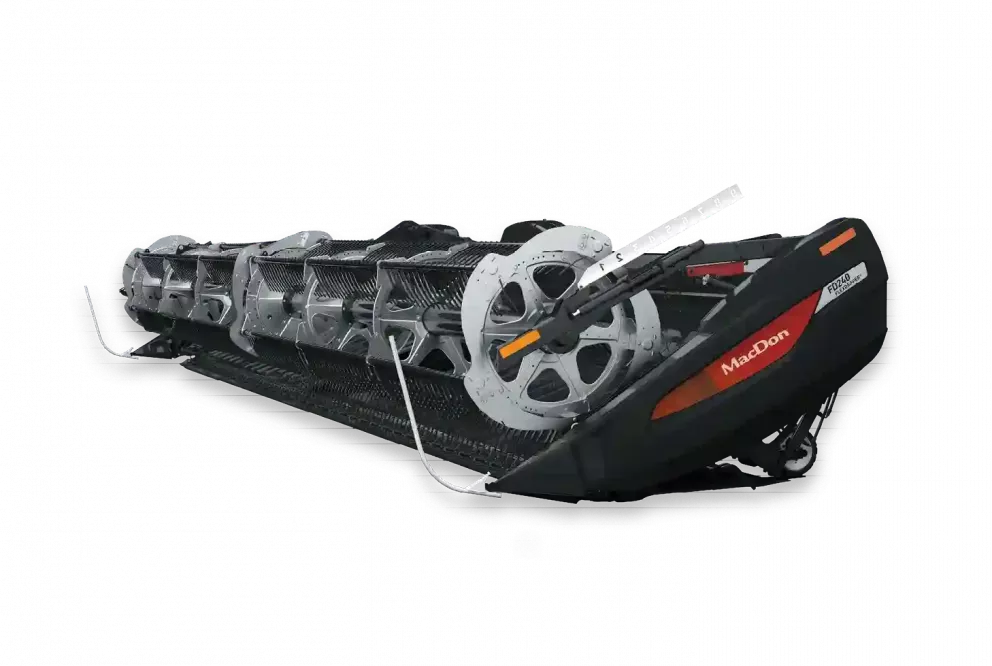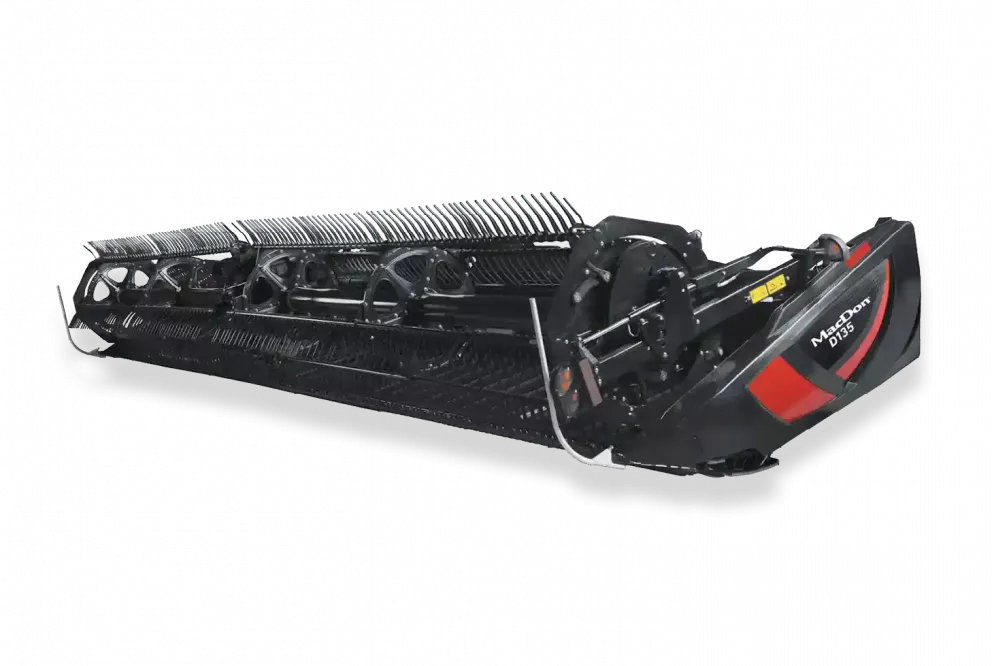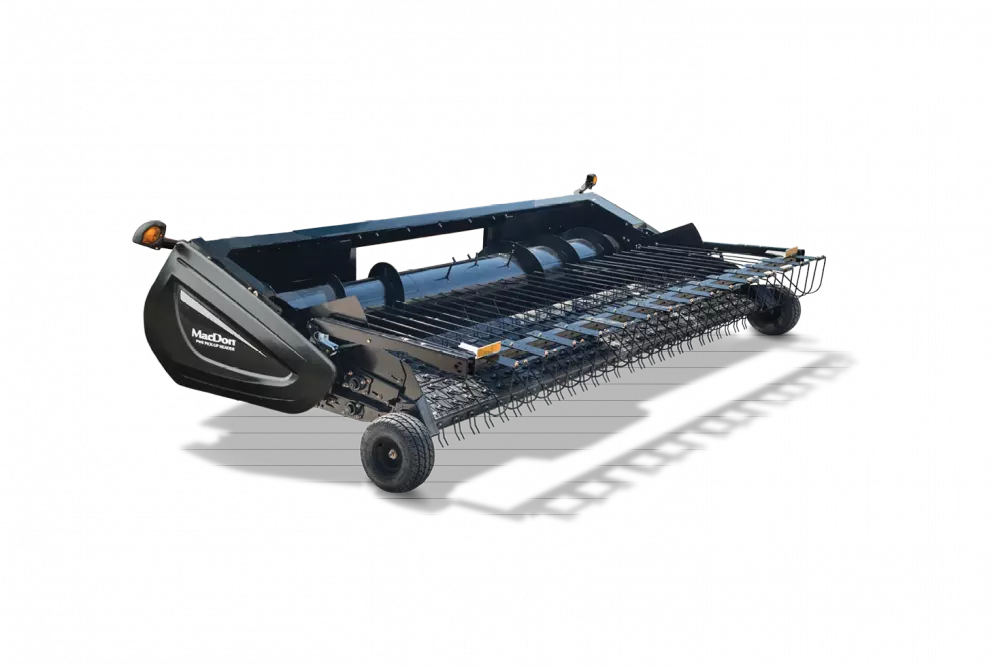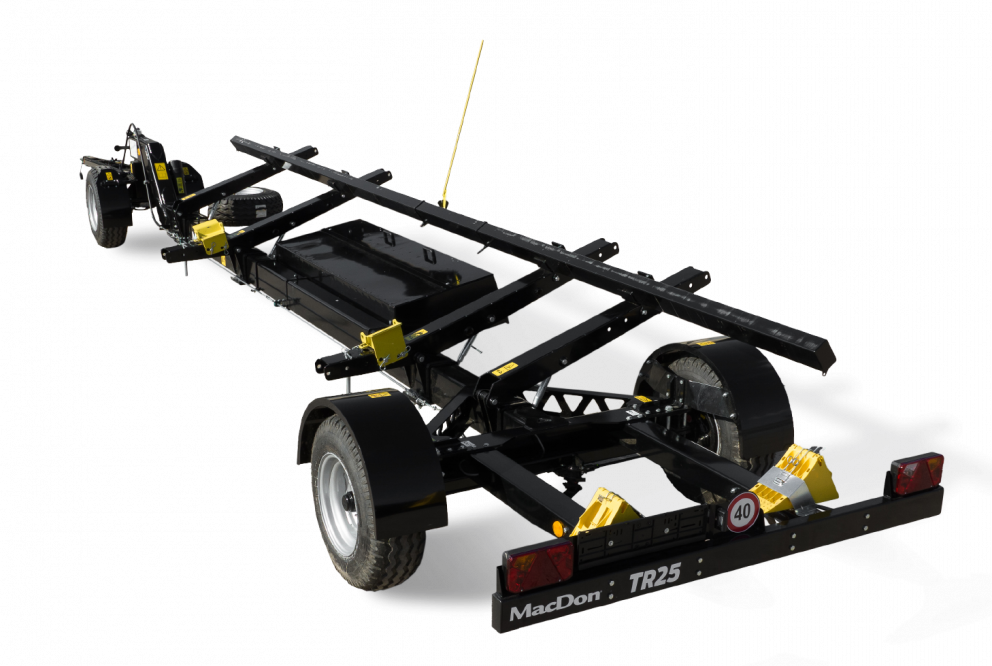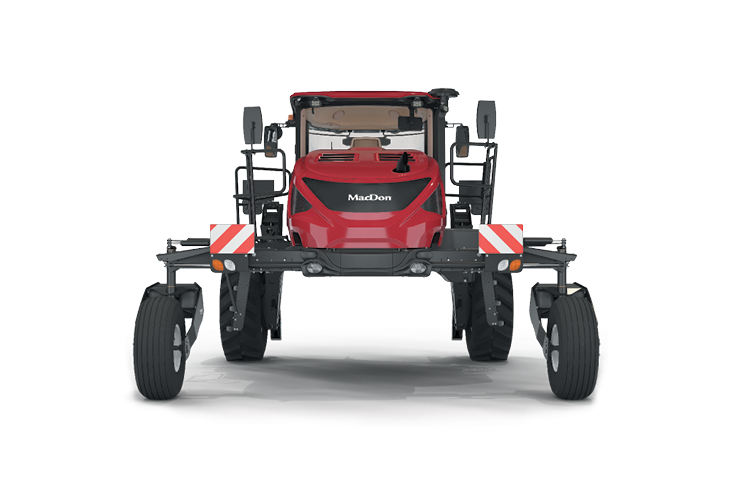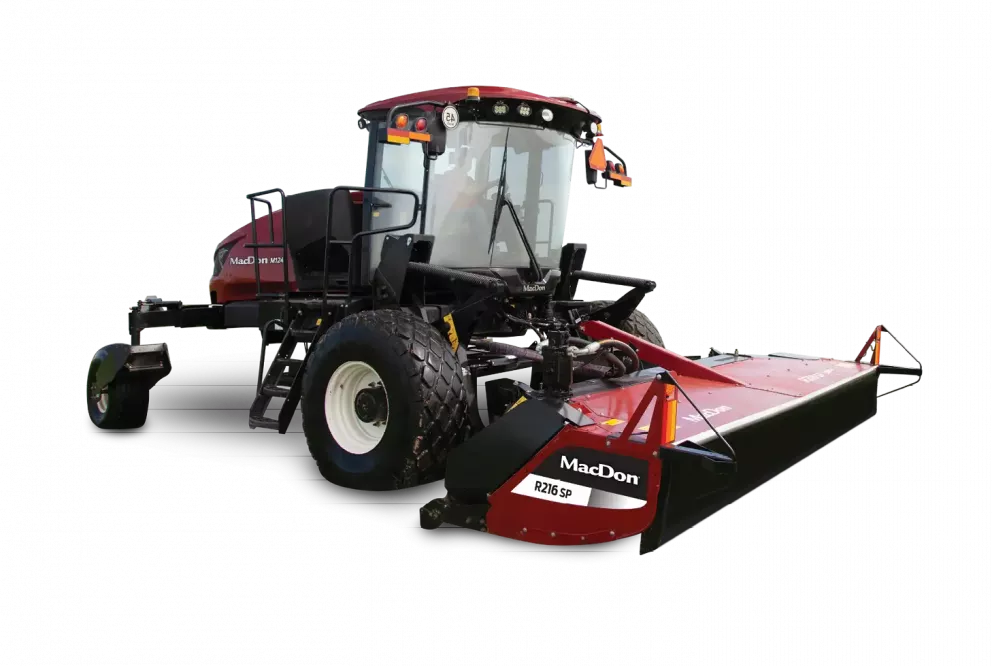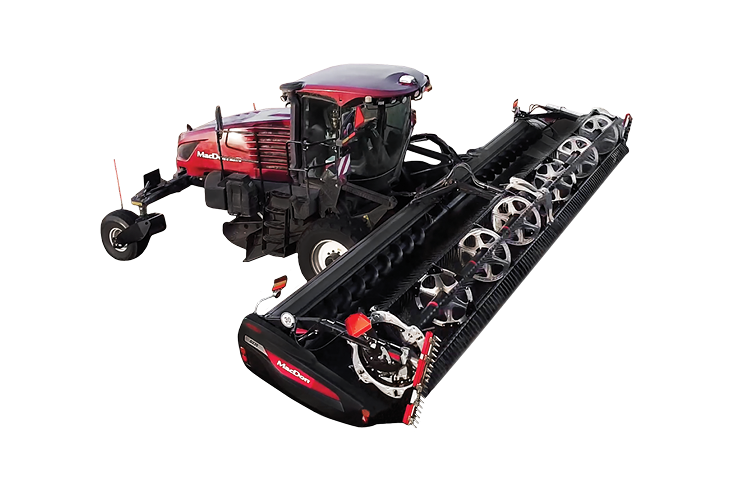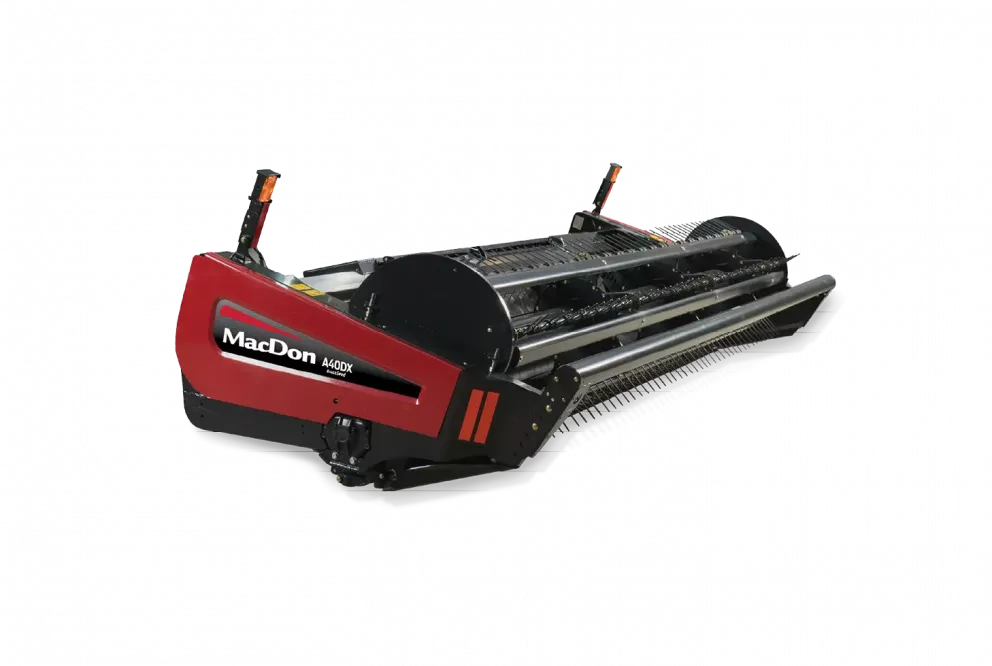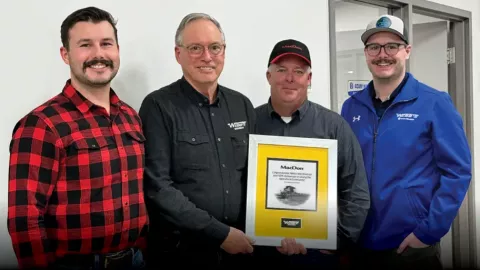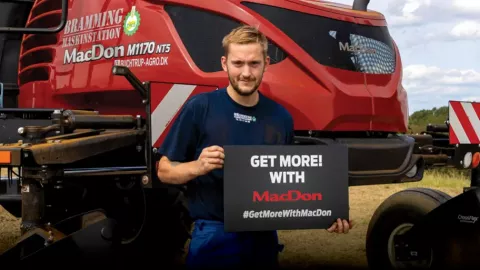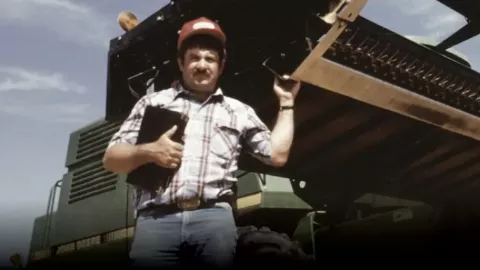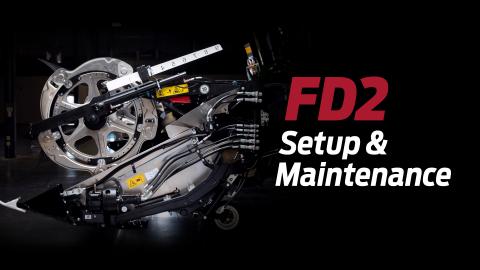A Tale of Two Headers
A less than satisfactory experience with a competitive flex head leads the Aulies to MacDon.
When Bill Aulie and his son Keith purchased a new Case IH 8120 two years ago for their 3,500 acre (1420 hectare) durum, canola and lentil farm near Rouleau, Saskatchewan, the salesmen at his dealership (Young’s Equipment of Regina) strongly urged him to purchase a MacDon FD70 FlexDraper® for the front of it.
“They called it the ultimate harvesting machine,” recalls Aulie, “but I said no thank you, I love the other brand.”
Beyond brand loyalty, Aulie says that there were a number of differences between the FD70 and the flex head they were used to that caused both him and Keith concern.
First, the FD70 was 4' (1.2 m) wider (40'/12.2 m as opposed to 36'/11.0 m) and Keith, the one responsible for most of the combine work on the Aulie farm, was concerned that the extra width would make it more difficult to follow. Second, Keith felt he didn’t have as good of a view of the knife with the FD70 as he did with the other header, and he thought that might cause issues. Finally, the FD70 didn’t have as efficient a system for backing up the canvases and dumping dirt, something the Aulies had come to rely on with the other brand. So the Aulies outfitted their new combine with a 36' (11.0 m) flex head made by the draper brand that they had trusted for years.
Unfortunately, their new header did not perform as expected.
“When cutting lentils the header would be digging in the dirt and the combine wouldn’t be responding. So we ended up playing with the header a lot, tilting it back to keep it out of the dirt. But that meant that we were leaving some pods on the plants because we weren’t cutting as low as we wanted.”
And because they were eating so much dirt, the Aulies found themselves having to spend time blending loads to reduce soil tag.
“With our previous header we had to do a lot of work trying to maintain the grade. We were constantly having to blend down loads to clean them up.”
Their previous header also came up short when trying to maximize their combine’s capacity.
“The 8120 shows you your load percentages. With our previous header we would try to maintain 100% engine load, but we could never get it even close. We were always down in the 50%, 60%, 70% range. Even after we changed all of the little gadgets that the manufacturer told us to we were still having problems. So after one year of fighting with that header and lack of support, we knew we had to try something else. It was an expensive decision to replace the header so soon, but oh man has it paid off!”
The difference in performance between the two headers was both immediate and dramatic. The first thing they noticed was a huge jump in speed. Whereas before they were only able to manage 4 or 5 MPH (6.4 or 8 km/h) harvesting in lentils with their 36' (11.0 m) header, now they were cutting at close to 7 or 8 MPH (11.3 to 12.9 km/h) with the FD70, even though they were cutting 4' (1.2 m) wider with each pass.
Even better, they were finally able to maximize the capacity of their combine.
“The minute we put the FD70 on, the potentiometers were just perfect and we were finally able to attain 100%. Now we just drive the combine to engine capacity and set her there.”
Keith also reported a significant reduction in harvesting stress thanks to the fact that he was no longer having to babysit the header to keep it out of the dirt.
“At the end of the first day I asked Keith how did it go, and he said ‘really good.’ But it was after the second day that he really got excited. ‘It’s unbelievable Dad,’ he said. ‘You never even have to look at the knife. I’ve just done a thousand acres and I haven’t touched dirt once.’”
Aulie says that it’s also less stress for him because he no longer has his son calling to say “Dad I broke two more sections”, or “I’ve got a great big pile of dirt on the table”, or “I’ve torn the canvas”.
“The combine and header communicated so well from day one – not like our previous header which didn’t even speak the same language. Now when we hit the field we can count on the FD70 to perform – there’s just so much less stress.”
“We also now know why the FD70 doesn’t have a system for backing up the canvases to dump dirt – it just doesn’t need it. We don’t have soil tag issues any more.”
Bill says that he realizes that their night and day experience with the two headers might be hard for some to believe, that he himself would likely not believe it if he hadn’t seen it himself. But now that they have witnessed the impact that the FD70 has had on their operation, they have become very excited about the product that has almost halved their combining time and made harvesting so much more pleasurable.
